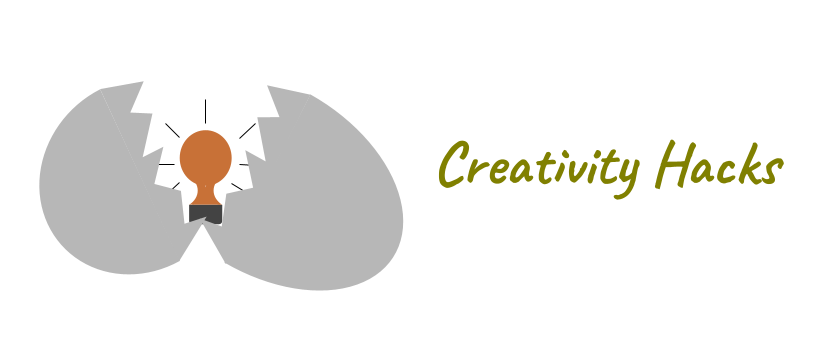Metaphors by themselves are creative acts — they bring together two unrelated concepts and provide a fresh way of looking at something familiar. Consider the overused and cliched metaphor about creativity, “thinking outside the box”, which implies stepping back and approaching the problem from a different direction. The origin of the metaphor is believed to come from the nine-dots puzzle, where you have to connect a 3×3 grid of dots using four lines or less without lifting the pen. The only way to solve the puzzle, that most people miss, is to connect the lines outside of the imaginary “box” created by the dots. Once you understand the principle behind the puzzle, the meaning of “thinking outside the box” becomes much more clear.
About The Hack
Metaphorical thinking can be extended to help trigger creative ideas in product design. The type of ideas that this process generates might come across as more surprising and fun, compared to the typical incremental innovation ideas, and therefore this hack makes for a useful addition to the initial ideation phase.
As a real world example, suppose you are trying to come up with new feature ideas for your document collaboration tool (e.g. Google Docs). To trigger creative ideas your goal is to try and combine “collaboration” with different natural or artificially created phenomena. Let’s say you pick your phenomenon to be “shadows.” You then explore characteristics of the phenomena that might apply to collaboration. One aspect of shadows is that they hide or make something less visible than the parts that are well lit. Applying this to your product, an idea could be to use AI to selectively add shadows to parts of the document that are more solidly fleshed out. This simple mechanism can nudge collaborators or reviewers to focus on parts of the document that need more work or clarity, thereby improving overall group productivity.
You can iterate through the process to generate more ideas. For example, another phenomenon could be “name carved on a tree”. What does this phenomenon imply? Why do people carve their names (e.g. “Josh was here”) on trees? It could be that people want to memorialize their presence or perhaps a way to mark their achievement after a long hike. Applying that to our example of collaboration, one idea could be to use AI to determine the order of authorship on a document based on how much different collaborators have contributed to the document. Many times the order of authors is predetermined before the work is actually done and doesn’t get updated based on actual outcome. This feature could make the process more fair for everyone.
The idea behind this hack is to explore different metaphors because not all of them will yield immediate insights. However, once you get an opening it might help trigger more ideas in that direction.
Summary
Finally, here is a quick summary of the creativity hack and how to use it.
| Description | Apply metaphorical thinking to come up with new product design ideas. Come up with a few natural or artificial phenomena (like shadows, fresh tracks on snow etc.), identify characteristics of the phenomena and apply that to the product under consideration. |
| Example | Applying “shadows” to a document collaboration tool could suggest an idea where parts of the document are shadowed to indicate that those sections are complete and nudge collaborators to focus on other sections. |
| Tips | Not all phenomena will lead to fresh insights, so if no ideas get triggered in a few minutes then pick a different one. |
| Extensions | Once you get a new direction through metaphors, you can reframe the problem and come up with more ideas. Using the previous example, you could reframe the problem as “how can we guide collaborators to the section that will improve efficiency?” Reframing then leads to a different set of ideas, for example guiding someone to a particular section because someone else is already working on another. |

